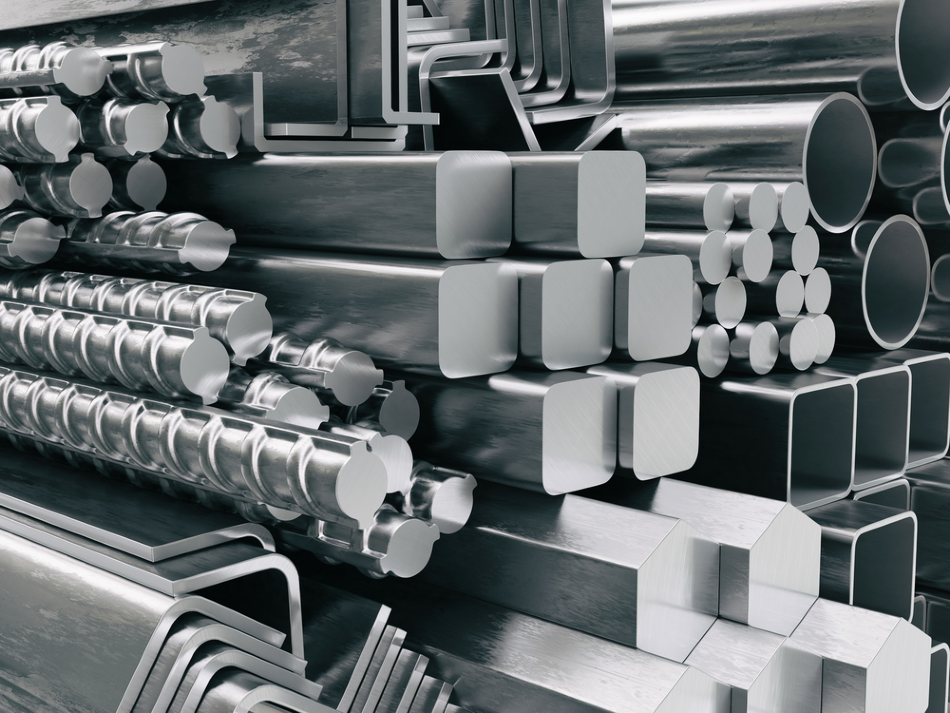Grade 440C martensitic stainless steel can achieve the highest strength, wear resistance and hardness of all the stainless alloys after heat treatment. The metal’s very high carbon content is responsible for these characteristics, which make the 440C suitable for use in components, such as ball bearings and valve parts.

Image Credit: Shutterstock/Maxx-Studio
Grades 440A and 440B are similar except for somewhat lower carbon contents - 0.60 - 0.75% and 0.75 - 0.95%, respectively. These materials possess lower attainable hardness, but somewhat higher corrosion resistance. Grade 440C is more available than the A or B variants, despite the fact that all three versions of this grade are standard grades.
There is also a free-machining variant grade 440F (UNS S44020) with the same high carbon content as grade 440C.
Martensitic stainless steels are designed for high hardness, and other properties are compromised to an extent. Their functional operating temperature range is restricted by their loss of ductility at sub-zero temperatures, and loss of strength by over-tempering at high temperatures. The alloy designations are 440C, UNS44004, and 1.4125. This stainless steel is supplied in the form of bar.
It offers good resistance to fresh water, alkalies, foods, the atmosphere, and mild acids. Excellent resistance can be achieved in the hardened and tempered and passivated condition. The corrosion resistance of grade 440C is similar to that of grade 304 in several environments.
The steel cannot be exposed to temperatures exceeding the appropriate tempering temperature, due to the reduction in mechanical properties by over-tempering.
Chemical Composition
| 1.4125 Steel |
Spec: EN 10088-3:2005 |
| Chemical Element |
% Present |
| Carbon (C) |
0.95 - 1.20 |
| Chromium (Cr) |
16.00 - 18.00 |
| Manganese (Mn) |
0.0 - 1.00 |
| Silicon (Si) |
0.0 - 1.00 |
| Phosphorous (P) |
0.0 - 0.04 |
| Sulphur (S) |
0.0 - 0.03 |
| Molybdenum (Mo) |
0.40 - 0.80 |
| Iron (Fe) |
Balance |
Properties
| Physical Property |
Value |
| Density |
7.65 g/cm³ |
| Thermal Expansion |
10.1 x 10-6/K |
| Modulus of Elasticity |
200 GPa |
| Thermal Conductivity |
24.2 W/m.K |
| Electrical Resistivity |
0.6 x 10-6 Ω.m |
| Bar - Up To 100mm Dia or Thickness |
Spec: EN 10088-3:2005 |
| Mechanical Property |
Value |
| Proof Stress |
448-1900 MPa |
| Tensile Strength |
758-2030 MPa |
| Elongation A50 mm |
4-14% |
Machinability - In the annealed condition, this stainless steel grade is moderately easy to machine; similar to high-speed steel. Chips are stringy and tough, so chip breakers are crucial. If these grades are hardened, they become tough and possibly impossible to machine.
Weldability - If welding is required, the steel must be pre-heated at 250°C and follow welding with a full anneal. Grade 420 filler will provide a high hardness weld, but it will not be as high as the 440C. 309 or 310 will produce soft welds with better ductility.
Heat treatment – It must be performed using full annealing technique at 850-900°C, followed by slow furnace cool to approximately 600°C, and finally air cooled. Sub-critical annealing must be performed at 735-785°C and followed by slow furnace cooling.
Hardening - Heating to 1010-1065°C, and quenching in warm oil or air help to harden the metal. Oil quenching is essential for heavy sections. Tempering at 150-370°C has to be performed to obtain a wide range of mechanical properties and hardness values. It is better not to temper in the range of 425-565°C because of lower corrosion resistance and impact resistance. Lower hardness is also achieved when tempering is done in the range of 590-675°C, which makes the metal machinable.
Applications
The common areas of applications include:
- Rolling element bearings
- Top quality knife blades
- Surgical instruments
- Valve seats
- Chisels

This information has been sourced, reviewed and adapted from materials provided by Aalco - Ferrous and Non-Ferrous Metals Stockist.
For more information on this source, please visit Aalco - Ferrous and Non-Ferrous Metals Stockist.